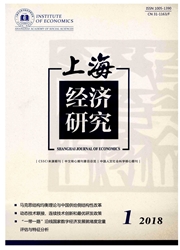

 中文摘要:
中文摘要:
我国省际间广泛而密切的经济联系不仅对各地区经济发展产生重要的影响,还对各地区的碳排放量产生巨大影响。该文基于基本模型,从省际贸易隐含碳排放视角,建立生产者责任、消费者责任和技术调整的消费者责任三种原则的核算方法以及碳减排责任分摊模型,并将其应用到省域碳排放核算与责任分摊研究。结果表明:区域间呈现出“东-中-西”空间梯度碳排放的格局;各地区在不同原则下的碳排放量存在着显著差异,生产者责任贸易隐含碳排放核算有利于东部经济发达地区,消费者责任贸易隐含碳排放核算有利于能源富集省份和经济较落后省份,技术调整的消费者责任贸易隐含碳排放核算不偏不倚,并没有显著有利于经济发达地区或经济落后地区;TCBA核算优于PBA、CBA,能够明确各省碳减排重点所在;在“平均权重”的情形下,华北地区和东北地区分摊的碳减排责任最多,是国家碳减排战略的重点关注对象。
 英文摘要:
英文摘要:
There is common and deep economic relationship among provinces in China, which not only has the important influence on regional economic development, also has a huge impact on regional carbon emissions. From a perspective of provincial trade embodied carbon emissions, using MRIO model, this paper proposes a framework about production-based, consumption- based and technology adjusted consumption-based to account embodied carbon, and :make provincial carbon emissions responsibility allocation model, then applies them to provincial trade embodied carbon accounting and responsibility allocation for research. Results indicates that it presents "east-mid- west" space gradient embodied carbon emissions pattern. Regions under different principles of trade embodied carbon exist significant differences. Production~based principle make favor of the eastern developed regions, consumption-based principle benefits energy-rich and deve!oping provinces, but technology adjusted consumption-based principle does not systematically benefit either developed or developing provinces. Technology adjusted consumption-based accounting is better than other two accounting methods, and it can clear each province the key point to reduce carbon emission. In "average weight" scenario, North China and Northeast allocate the most carbon emissions responsibility, national carbon reduction strategy should focus on these regions.
 同期刊论文项目
同期刊论文项目
 同项目期刊论文
同项目期刊论文
 期刊信息
期刊信息
